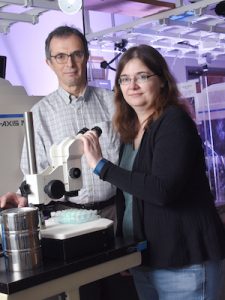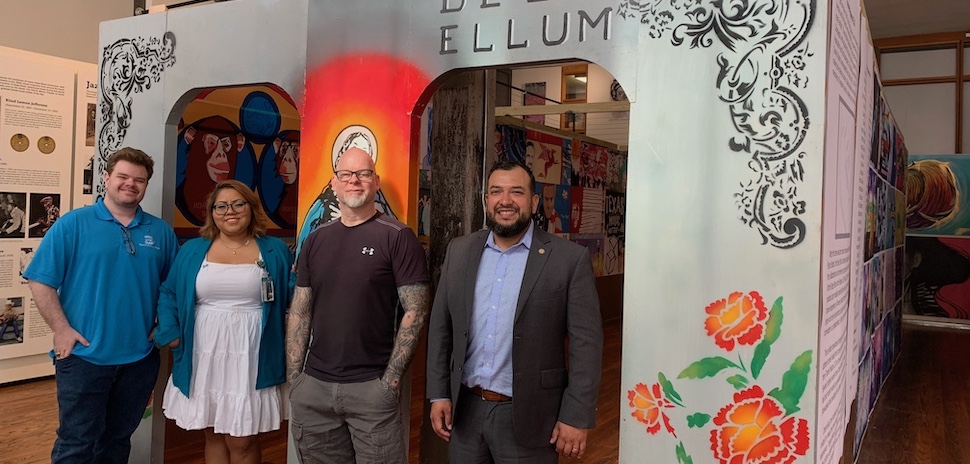Pioneering research by an international team including researchers from the UT Southwestern Medical Center could help in the battle against the world’s most deadly infectious diseases.

Drs. Dr. Zbyszek Otwinowski (left) and Dominika Borek at UT Southwestern Medical Center. [Photo courtesy of UT Southwestern]
The Center for Structural Genomics of Infectious Diseases announced that it achieved a significant milestone in understanding pathogens that are responsible for some of the most-feared diseases such as the Ebola virus, the Zika virus and antibiotic-resistant bacteria.
Ten scientific institutions in the U.S., Europe, and Canada comprise the consortium that announced it has determined the 3-D structures of more than 1,000 proteins, an important step in figuring out where a pathogen could be vulnerable to vaccines or drugs, UT Southwestern said in a news release.
The UT Southwestern team is led by Dr. Zbyszek Otwinowski, professor of biophysics and biochemistry. Dr. Dominika Borek, assistant professor of biophysics and biochemistry, also contributed vital expertise toward the studies’ completion.
Otwinowski said that vulnerabilities often are found at the points where molecules bind to one another.
Making a 3-D structure of a protein is an involved process, according to the release.
It must be cloned, expressed, and crystalized, and the data from X-ray diffraction are collected at the Advanced Photon Source at Argonne National Laboratory.
The data defines the location of each of hundreds or even thousands of atoms to create 3-D models of the structure that can then be analyzed via graphics software.
INFECTIOUS DISEASES INCLUDING EBOLA WERE INVESTIGATED
The release said that each institution in the consortium manages one aspect of the research, with UT Southwestern responsible for managing the salvage pathway. That’s where scientists design custom methods for determining molecular structures that resist standard approaches, and where advanced efforts are justified because of the potential for drug or vaccine development.
UT Southwestern was cited for how its team helped solve structures in proteins involved in the replication of the Ebola virus.
Ebola became a household word in Dallas in 2014 when Thomas Eric Duncan, a visitor from Liberia, died from the disease at Texas Health Presbyterian Hospital Dallas. Two nurses caring for Duncan contracted the disease, but later recovered.
Delivering what’s new and next in Dallas-Fort Worth innovation, every day. Get the Dallas Innovates e-newsletter.





































































